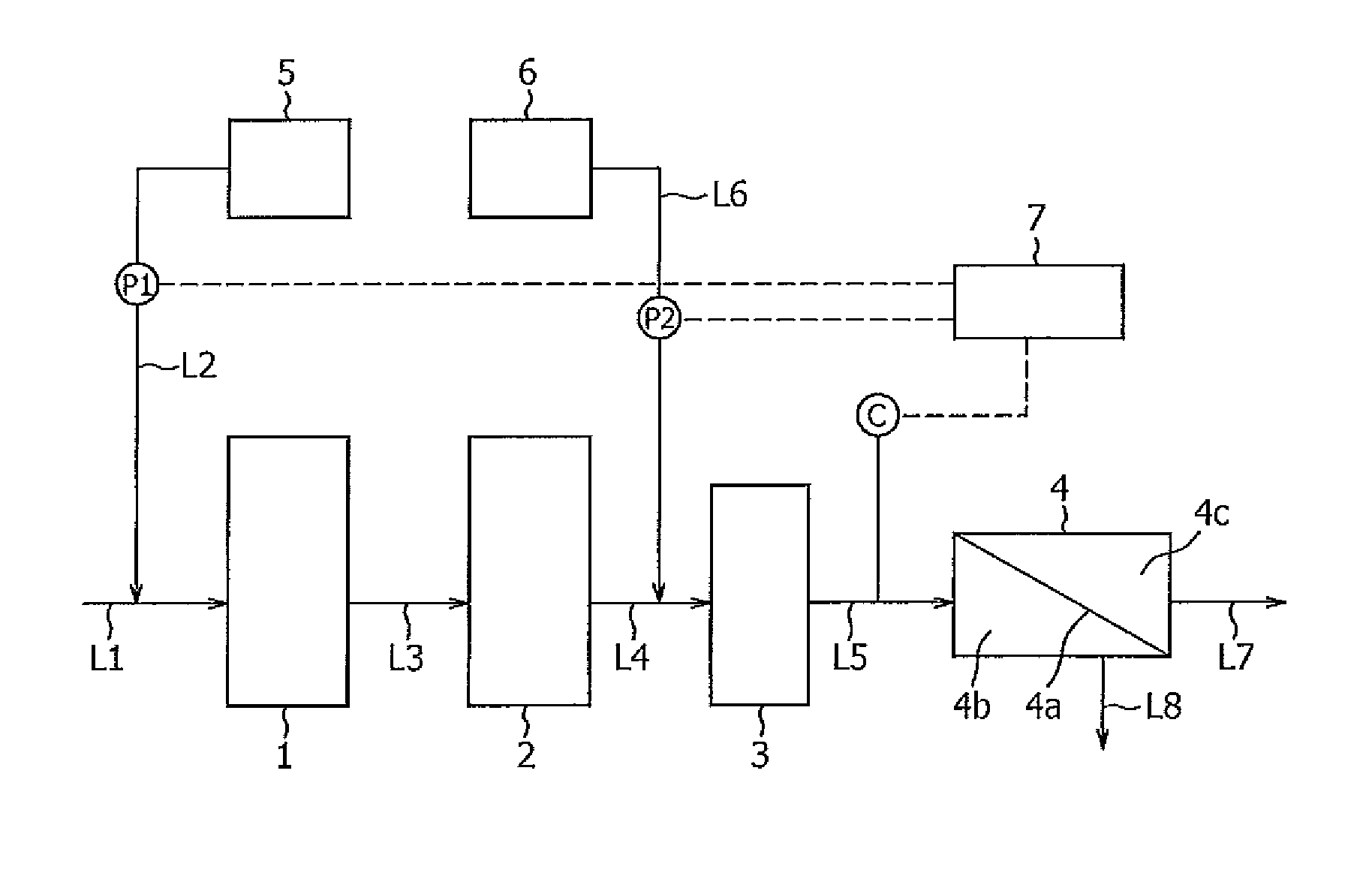Method of membrane separation
a membrane and membrane technology, applied in the direction of membranes, separation processes, water/sewage treatment by oxidation, etc., can solve the problems of low preventing effect of slime adhesion, high treatment cost, and flux and separation rate reduction
- Summary
- Abstract
- Description
- Claims
- Application Information
AI Technical Summary
Benefits of technology
Problems solved by technology
Method used
Image
Examples
examples
[0081]Following is an explanation of Examples and Comparative Examples wherein % denotes “% by weight” unless specific indication is given. Viable cell count (log CFU / mL) was measured by the following method. Namely, 50 mL of the supplied water to RO membrane separation apparatus 4 was sampled in a 100 mL sterilized bottle from the exit of security filter 3 and left as it was at 30° C. for 7 days. Then 100 μL of the sample was spread on an agar medium and incubated at 30° C. for 7 days. Then the number of formed colonies on the culture medium was counted to calculate viable cell count (log CFU 1 mL). The used agar medium was the most colony-forming culture medium selected from several different agar media.
examples 1-13
, Comparative Examples 1-3
[0082]Slime prevention treatment was carried out by supplying waste-treated water, as feed water, to RO membrane separation test apparatus for one month, and by adding, under the condition given in Table 1, intermittently to the feed water, combined chlorine agent comprising sulfamic compound which consists of an aqueous agent of pH 13 comprising 2% (as available chlorine (Cl2) concentration) of sodium hypochlorite, 8% of sulfamic acid, and 1% of sodium hydroxide. For the RO membrane, TW-30 [PA membrane], a product of The Dow Chemical Company was used. The experimental results obtained are given in Table 1.
[0083]In Table 1, the effect of each Example was evaluated by flux maintaining rate for one month of water feeding, namely rate of the final flux to the first flux, wherein 95-100% (final flux / first flux) was graded as ◯, 90-94% as Δ, and −89% as ×. “Viable cell count” in Table 1 denotes log value of viable cell count in 1 mL of water to be treated (CFU / m...
PUM
 Login to View More
Login to View More Abstract
Description
Claims
Application Information
 Login to View More
Login to View More - R&D
- Intellectual Property
- Life Sciences
- Materials
- Tech Scout
- Unparalleled Data Quality
- Higher Quality Content
- 60% Fewer Hallucinations
Browse by: Latest US Patents, China's latest patents, Technical Efficacy Thesaurus, Application Domain, Technology Topic, Popular Technical Reports.
© 2025 PatSnap. All rights reserved.Legal|Privacy policy|Modern Slavery Act Transparency Statement|Sitemap|About US| Contact US: help@patsnap.com


